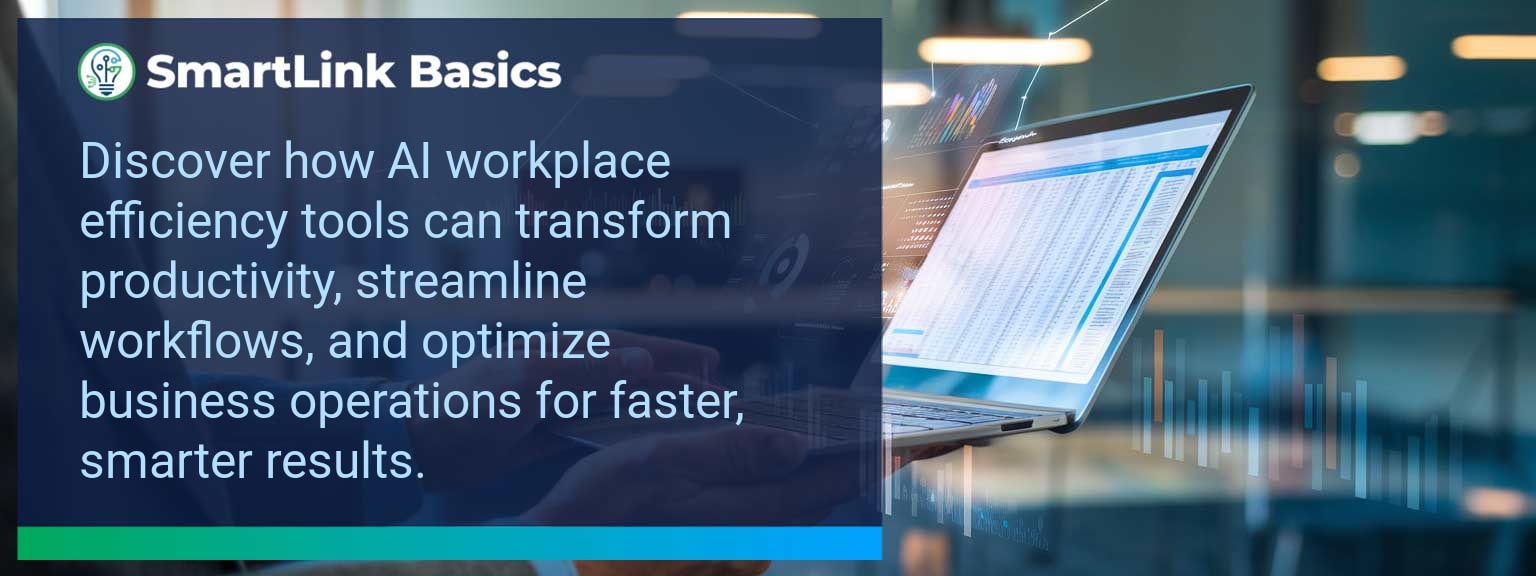AI-driven automation can reduce manual workload in sales operations by up to 30%, according to McKinsey research. For sales leaders under pressure to accelerate growth, AI workplace efficiency is no longer a strategic option—it is a necessity. SmartLink Basics advises organizations on embedding AI into the revenue engine, ensuring measurable gains in performance and profitability. This article dissects the barriers to productivity, demonstrates how AI-enabled workplace productivity tools deliver operational gains, and provides a structured approach for adoption. You will learn how to map gaps, deploy AI for business process acceleration, measure impact through precise metrics, and prepare for emerging trends in artificial intelligence in workplace environments.
- Identify and eliminate workflow inefficiencies before adding AI solutions.
- Leverage AI automation tools for routine data tasks and reporting.
- Use AI-powered workplace productivity tools for sales forecasting and lead scoring.
- Track gains through specific, role-level productivity metrics.
- Prepare for AI trends like generative assistants and predictive analytics.
Identifying Barriers To Workplace Productivity
Workplace productivity often declines due to inefficient handoffs, duplicated tasks, and unstructured data. In sales teams, these inefficiencies manifest as missed follow-ups, inaccurate forecasting, and extended cycle times. Before adopting AI workplace efficiency strategies, leaders must understand where time and value leak from the system. Common friction points include fragmented tech stacks, inconsistent data entry, and reactive rather than proactive communication flows. As an example, a mid-sized SaaS provider reduced deal delays by auditing its CRM usage, revealing that 40% of reps skipped required data updates, which later disrupted pipeline reviews. Addressing such root causes before automation ensures that AI tools compound value rather than replicate inefficiencies. Inventory processes and map value streams to target the right problems with AI.Leveraging AI Tools For Efficiency Gains
Once barriers are clear, automation tools can be applied with precision. AI workplace efficiency improves when task-heavy functions—like CRM data hygiene, lead scoring, and pipeline reporting—are handled by intelligent systems. These tools not only free human capacity but also increase output accuracy and responsiveness. For instance, an AI-driven scheduling assistant reduced meeting coordination time by 75% for a regional sales team, freeing up 200 additional selling hours per quarter. Aligning AI for business tasks with revenue-driving priorities ensures measurable return. Adopt AI solutions that integrate seamlessly within current workflows to avoid adoption resistance.Measuring Success Through Productivity Metrics
AI initiatives require disciplined measurement frameworks. Relying on anecdotal benefits undermines the business case. Instead, define and track precision metrics across leading, lagging, and quality categories. Leading metrics predict near-term outcomes, lagging metrics verify end results, and quality metrics assess user adoption and satisfaction.| Category | Metric | Definition | Target |
|---|---|---|---|
| Leading | Automation Usage Rate | % of eligible tasks completed by AI tools | 85%+ |
| Lagging | Cycle Time Reduction | Average days from lead to close | 20% decrease |
| Quality | User Satisfaction Score | Internal rating of AI tool experience | 8/10+ |
Emerging AI Trends In The Workplace
Generative AI is enabling hyper-personalized customer communications without increasing workload. Predictive analytics now allow sales leaders to forecast risk with greater precision, driving proactive decision-making. Remote work optimization tools powered by AI are also transforming collaboration by dynamically prioritizing discussion topics and assigning follow-up tasks instantly. A global B2B distributor integrated AI meeting summarization, cutting post-meeting admin time by 40%. Keep your AI roadmap agile, evaluating quarterly to capture advances before competitors do. For deeper implementation guidance, review the expert insights from SmartLink Basics.Get the 90-day plan, coaching rubric, and dashboard template to operationalize AI in your enablement program.









